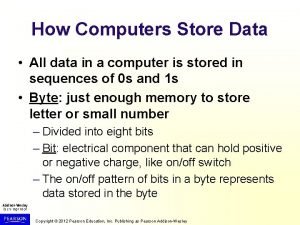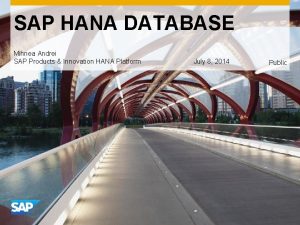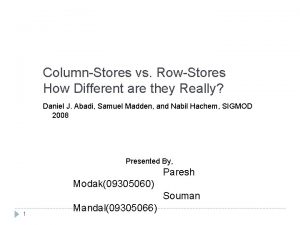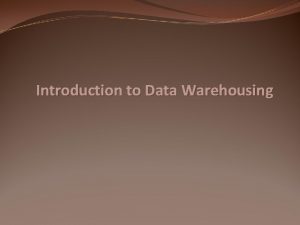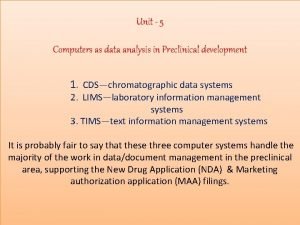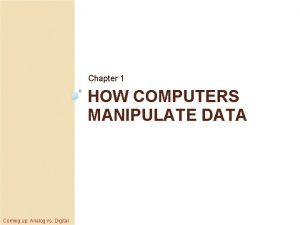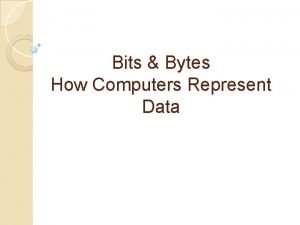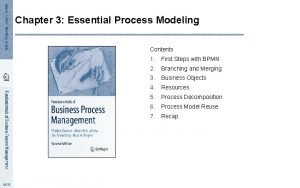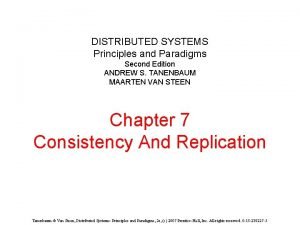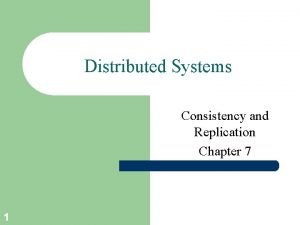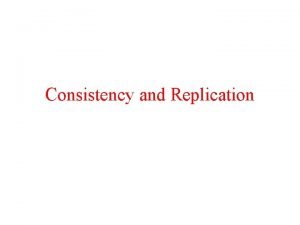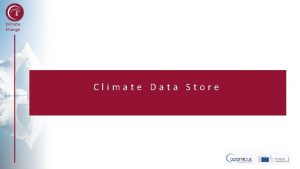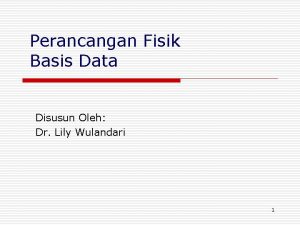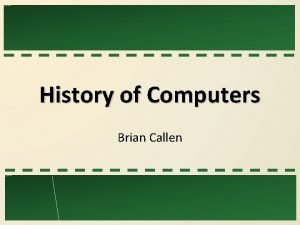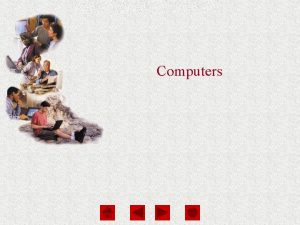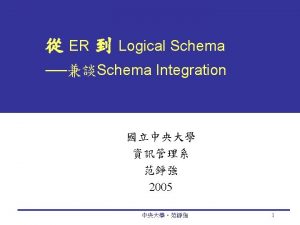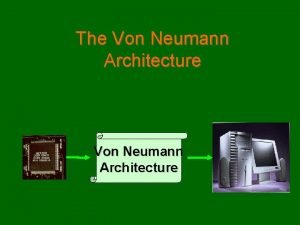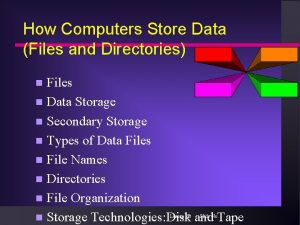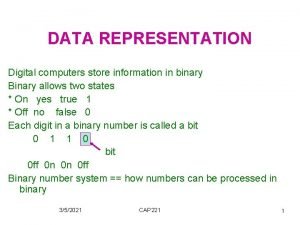How Computers Store Data All data in a














- Slides: 14

How Computers Store Data • All data in a computer is stored in sequences of 0 s and 1 s • Byte: just enough memory to store letter or small number – Divided into eight bits – Bit: electrical component that can hold positive or negative charge, like on/off switch – The on/off pattern of bits in a byte represents data stored in the byte Copyright © 2012 Pearson Education, Inc. Publishing as Pearson Addison-Wesley

Copyright © 2012 Pearson Education, Inc. Publishing as Pearson Addison-Wesley

Copyright © 2012 Pearson Education, Inc. Publishing as Pearson Addison-Wesley

Storing Numbers • Bit represents two values, 0 and 1 • Computers use binary numbering system – Position of digit j is assigned the value 2 j-1 – To determine value of binary number sum position values of the 1 s • Byte size limits are 0 and 255 – 0 = all bits off; 255 = all bits on – To store larger number, use several bytes Copyright © 2012 Pearson Education, Inc. Publishing as Pearson Addison-Wesley

Copyright © 2012 Pearson Education, Inc. Publishing as Pearson Addison-Wesley

How to Convert Decimal to Binary • • • Convert 37 to binary 128 64 32 16 8 4 2 1 128 doesn’t fit into 37 b 7=0 64 doesn’t fit into 37 b 6=0 32 fits into 37 b 5=1 37 – 32 = 5, continue the process with 5 16 doesn’t fit into 5 b 4=0 8 doesn’t fit into 5 b 3=0 4 does fit into 5 b 2=1 Copyright © 2012 Pearson Education, Inc. Publishing as Pearson Addison-Wesley

Convert 37 to Binary • • • • 128 64 32 16 8 4 2 1 128 doesn’t fit into 37 64 doesn’t fit into 37 32 fits into 37 Subtract: 37 – 32 = 5 Continue the process with 5 16 doesn’t fit into 5 8 doesn’t fit into 5 4 does fit into 5 Subtract: 5 - 4 = 1 Continue the process with 1 2 doesn’t fit into 1 1 fits into 1 00100101 Copyright © 2012 Pearson Education, Inc. Publishing as Pearson Addison-Wesley b 7=0 b 6=0 b 5=1 b 4=0 b 3=0 b 2=1 b 1=0 b 0=1

Convert 37 to Binary - Second Method • • Divide by 2 and store the remainder 37/2=18 b 0=1 18/2 =9 b 1=0 9/2=4 b 2=1 4/2=2 b 3=0 2/2=1 b 4=0 1/2=0 b 5=1 Write remainders from bottom up and pad with leading 0’s to fill all 8 bits • 00100101 Copyright © 2012 Pearson Education, Inc. Publishing as Pearson Addison-Wesley

Convert 259 to binary • • • 259/2 = 129 b 0=1 129/2 = 64 b 1=1 64/2 = 32 b 2=0 32/2=16 b 3=0 16/2=8 b 4=0 8/2=4 b 5=0 4/2=2 b 6=0 2/2 =1 b 7=0 1/2 = 0 b 8=1 000000011 2 bytes are needed to store this number Copyright © 2012 Pearson Education, Inc. Publishing as Pearson Addison-Wesley

Copyright © 2012 Pearson Education, Inc. Publishing as Pearson Addison-Wesley

Storing Characters • Data stored in computer must be stored as binary number • Characters are converted to numeric code, numeric code stored in memory – Most important coding scheme is ASCII • ASCII is limited: defines codes for only 128 characters – Unicode coding scheme becoming standard • Compatible with ASCII • Can represent characters for other languages Copyright © 2012 Pearson Education, Inc. Publishing as Pearson Addison-Wesley

Copyright © 2012 Pearson Education, Inc. Publishing as Pearson Addison-Wesley

Advanced Number Storage • To store negative numbers and real numbers, computers use binary numbering and encoding schemes – Negative numbers encoded using two’s complement – Real numbers encoded using floating-point notation Copyright © 2012 Pearson Education, Inc. Publishing as Pearson Addison-Wesley

Other Types of Data • Digital: describes any device that stores data as binary numbers • Digital images are composed of pixels – To store images, each pixel is converted to a binary number representing the pixel’s color • Digital music is composed of sections called samples – To store music, each sample is converted to a binary number Copyright © 2012 Pearson Education, Inc. Publishing as Pearson Addison-Wesley
 How computers store data
How computers store data Row store vs column store
Row store vs column store Row store vs column store
Row store vs column store Name all the lines
Name all the lines Introduction to data warehousing
Introduction to data warehousing Tims and lims
Tims and lims Computers manipulate data in many ways
Computers manipulate data in many ways Control flow and data flow computers
Control flow and data flow computers Kilo mega giga tera
Kilo mega giga tera Bpmn data store example
Bpmn data store example Distributed data store
Distributed data store Consistency and replication in distributed systems
Consistency and replication in distributed systems Distributed data store
Distributed data store Canalogu
Canalogu Data store adalah
Data store adalah
